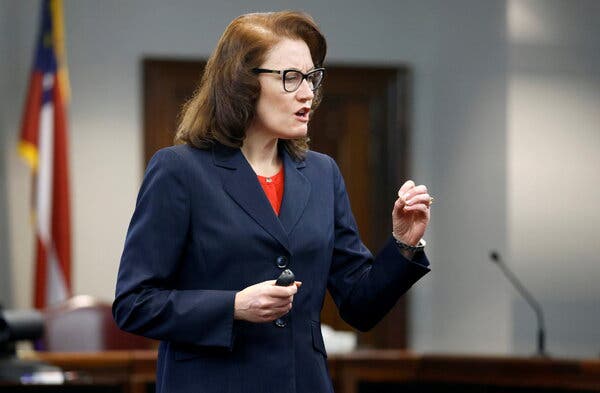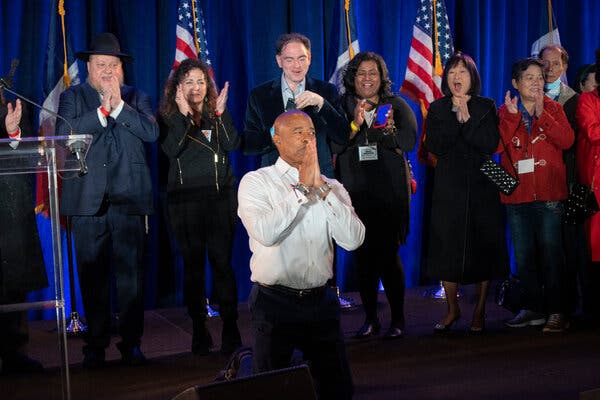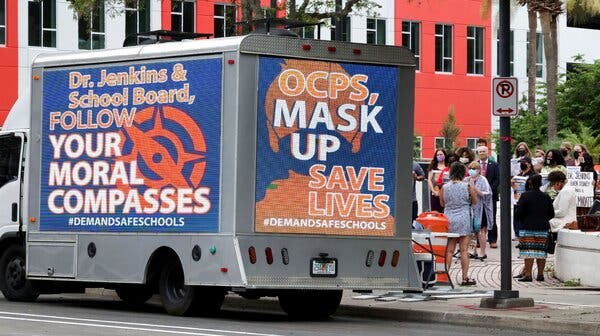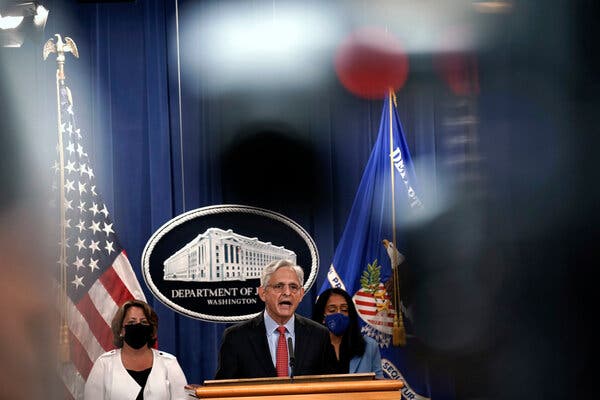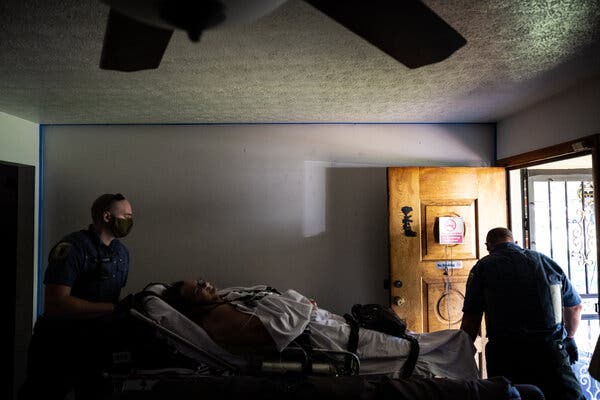OPEC and Oil-Producing Countries to Keep Increasing Production
Gazprom Neft’s oil refinery in Omsk, Russia. Officials from OPEC, Russia and other oil-producing countries met on Thursday to discuss oil production in January.Alexey Malgavko/ReutersWhen officials from OPEC, Russia and other oil-producing countries met by video conference on Thursday, they had a lot to worry about. Those concerns included whether the emergence of a new variant of the coronavirus might torpedo the budding economic recovery, and the restiveness of the United States and key Asian customers, including China, over high oil prices.In the end, the group known as OPEC Plus decided to take the easy route and stick with a previously agreed to program of gradually adding oil to the market. They decided to raise production by 400,000 barrels a day in January, just as they have in recent months. But to show worried oil markets that they are ready to change that plan if needed, the producers said in a news release that their meeting would “remain in session” so the producers could monitor the market and “make immediate adjustments if required.”Maintaining the planned increase will probably ease friction with the Biden administration, which last month orchestrated a release of oil stocks from the United States Strategic Petroleum Reserve in conjunction with smaller moves by other large oil consumers. And the decision also appeared to be a signal that it remains unclear what affect the Omicron variant will have on the world economy.A propaganda display in the city of Hotan, in the Chinese region of Xinjiang, earlier this year. Ng Han Guan/Associated PressTwitter and Facebook said they have removed thousands of accounts connected to Chinese information campaigns, in the latest sign of Beijing’s ambitions to shape the global narrative around the country.In a notice posted early Thursday, Twitter said that it took action against two networks comprising more than 2,000 accounts that worked to undermine accusations of human rights abuses in the western Chinese region of Xinjiang, where Chinese officials have interned Muslim minorities and subjected them to harsh surveillance.Both networks promoted videos shot within Xinjiang that sought to portray the region as one of prosperity and freedom. One of the networks, which Twitter attributed to the Chinese Communist Party, also coordinated verbal attacks against activists and articles critical of China, while bolstering Chinese state media with positive comments and likes, according to a report on the takedown released by the Stanford Internet Observatory, a research group focused on the misuse of technology and social media.The New York Times and ProPublica first identified a large number of accounts in the network in a June report about the campaign to project normalcy in Xinjiang.Although many of the more than 30,000 tweets attributed to the network received little engagement, the use of harassment and hashtags indicated “an effort to reframe global debate or to crowd out critical/adversarial narratives,” the Stanford report said.In a separate statement released late Wednesday, Facebook said it had taken down more than 500 accounts after they had helped to amplify posts from a fake Swiss biologist named “Wilson Edwards” who alleged the United States was interfering in World Health Organization efforts to track the origins of Covid-19. The fake scientist’s accusations were quoted by Chinese state media.When the Swiss embassy in Beijing said “Wilson Edwards” did not exist, Facebook found that his account on the platform had been created less than 12 hours before it began posting.The takedowns are the latest in a series of efforts by American social media companies to push back against Chinese information campaigns. Although blocked within China, Twitter and Facebook have become important avenues for shaping global opinions about China. In recent years, Chinese diplomats and state media have focused new efforts on building followings on the platforms.Assembling a Ford F-150 truck at the company’s plant in Dearborn, Mich. Members of the union voted on an election proposal that would change the way they select its top leaders.Carlos Osorio/Associated PressMembers of the United Automobile Workers union have voted decisively to change the way they choose their president and other top leaders, opting to select them through a direct vote rather than a vote of delegates to a convention, as the union has done for decades.The votes on the election reform proposal were cast in a referendum open to the union’s roughly one million current workers and retirees and due by Monday morning. About 143,000 members cast ballots, and with 84 percent of the vote counted on Wednesday night, a direct-election approach was favored by 63 percent, according to a court-appointed independent monitor of the union.The referendum was required by a consent decree approved this year between the union and the U.S. Justice Department, which had spent years prosecuting a series of corruption scandals involving the embezzlement of union funds by top officials and illegal payoffs to union officials from the company then known as Fiat Chrysler.More than 15 people were convicted as a result of the investigations, including two recent U.A.W. presidents.Reformers within the U.A.W. have long backed the one member, one vote approach, arguing that it would lead to greater accountability, reducing corruption and forcing leaders to negotiate stronger contracts. A group called Unite All Workers for Democracy helped organize fellow members to support the change in the referendum.“The membership of our great union has made clear that they want to change the direction of the U.A.W. and return to our glory days of fighting for our members,” Chris Budnick, a U.A.W. member at a Ford plant in Louisville who serves as recording secretary for the reform group, said in a statement Wednesday evening. “I am so proud of the U.A.W. membership and their willingness to step up and vote for change.”David Witwer, an expert on union corruption at Pennsylvania State University at Harrisburg, said the experience of the International Brotherhood of Teamsters, which shifted from voting through convention delegates to direct election in 1991, after an anti-racketeering lawsuit by federal prosecutors, supports the reformers’ claims.Dr. Witwer said the delegate system allowed seemingly corrupt union leaders to stay in power because of the leverage they had over convention delegates, who were typically local union officials whom top leaders could reward or punish.“Shifting the national union election process from convention delegates to membership direct voting was pivotal in changing the Teamsters,” he said by email.At the U.A.W., leadership positions have been dominated for decades by members of the so-called Administration Caucus, a kind of political party within the union whose power the delegate system enabled.Some longtime U.A.W. officials credit the caucus with helping to elevate women and Black people to leadership positions earlier than the union’s membership would have directly elected them to these positions.But the caucus could be deeply insular. The Justice Department contended in court filings that Gary Jones, a former U.A.W. president who was sentenced to prison this year for embezzling union funds, used some of the money to “curry favor” with his predecessor, Dennis Williams, while serving on the union’s board.Union officials have said that Mr. Williams, who was recently sentenced to prison as well, later backed Mr. Jones to succeed him, helping to ensure Mr. Jones’s ascent.BuzzFeed’s headquarters in New York in 2018. All 61 employees who belong to the BuzzFeed News Union are stopping work for a day on Thursday.Drew Angerer/Getty ImagesAs BuzzFeed revs up to go public in the coming days, a move that could mean millions of dollars for its early investors and some current and former staff members, not everyone at the company was cheering.On Thursday, union employees at the company’s Pulitzer Prize-winning news division, BuzzFeed News, announced that they were “walking off the job for one day” in an effort to speed contract negotiations. All 61 of the workers who belong to the BuzzFeed News Union, which includes reporters, editors, photographers and designers, are taking part in the daylong work stoppage, the union said.The walkout comes on a big day for the 15-year-old digital media company: BuzzFeed’s shareholders were scheduled to vote Thursday on a long-in-the-works plan to take the company public by merging it with a so-called blank check company, 890 5th Avenue Partners, a deal that was announced in June.The company is targeting a valuation of $1.5 billion. If the plan wins shareholder approval, BuzzFeed could make its stock market debut as soon as Monday, under the ticker symbol BZFD.In a statement, the union accused the company of refusing to budge in contract negotiations. The main sticking point is pay. The union said BuzzFeed was proposing a 1 percent guaranteed annual wage increase and a minimum salary of $50,000.“We deserve a strong contract that protects us and ensures a fair and equitable workplace for everyone in our unit,” Katie Notopoulos, a senior tech reporter, said in the statement.A BuzzFeed spokesman said the company would be back at the negotiating table soon.“There’s a bargaining session planned for next Tuesday where we hope the union will present a response on these issues,” a BuzzFeed spokesman said.The union, which formed in February 2019, is represented by the NewsGuild, which also represents workers at The New York Times and other media outlets. The union and the company have yet to agree on a first contract.U.S. stocks rose in early trading Thursday, with the S&P 500 poised to recover some of its losses from the week. The benchmark index was 0.5 percent higher at the start of trading, while the tech heavy Nasdaq composite was up 0.2 percent.The emergence of the new variant of the coronavirus, Omicron, has triggered a tumultuous stretch for major indexes. The S&P 500 on Friday marked its biggest drop since February, and has whipsawed between gains and losses since.News that the Federal Reserve could reduce its support for the economy more quickly, as well as the first confirmed case of the Omicron variant in the U.S. prompted stocks to fall again. It has added up to a drop of about 3 percent since last Wednesday.Oil prices, which have been similarly volatile, fell again on Thursday as officials fromOPEC, Russia and other oil-producing countries met to discuss their production targets. The group, called OPEC Plus, made no changes to its production schedule. West Texas Intermediate, the U.S. crude benchmark, dropped about 1 percent to $64.81 a barrel.Since the Omicron variant was first reported, oil prices are down about 18 percent.“The Omicron variant has sobered up markets during the last few days, halting the oil demand recovery enthusiasm and sending traders scrambling to limit risk in their portfolios,” Louise Dickson, senior oil markets analyst at Rystad Energy, wrote in a note.The Labor Department reported a rise in initial jobless claims on Thursday, saying that claims rose last week by 28,000 to 222,000, but still remaining at their lowest level since March 2020. The jump follows sharp drop in claims in the prior week.The Labor Department is set to publish its jobs report for November on Friday, with economists surveyed by Bloomberg expecting more than 500,000 jobs added last month.Apple fell more than 3 percent in early trading after Bloomberg News reported that the company has warned suppliers that demand for iPhones is slowing as the holiday season approaches.Lynn Fitch, the Mississippi attorney general, with Scott Stewart, the state’s solicitor general, on Wednesday in Washington.Kenny Holston for The New York TimesOne of the arguments that Mississippi has made as a law banning abortions after 15 weeks of pregnancy makes its way through the Supreme Court is that women have progressed enough economically to make abortion unnecessary.Before Roe v. Wade, the 1973 Supreme Court case that established a constitutional right to abortion up to 23 weeks, “there was little support for women who wanted a full family life and a successful career,” Mississippi’s attorney general, Lynn Fitch, said in a statement in July summing up the argument and announcing that she had filed a brief with the court in Dobbs v. Jackson Women’s Health Organization. “Maternity leave was rare. Paternity leave was unheard-of. The gold standard for professional success was a 9-to-5 with a corner office. The flexibility of the gig economy was a fairy tale.“In these last 50 years,” she continued, “women have carved their own way to achieving a better balance for success in their professional and personal lives.”While some progress has been made, the idea that the benefits that Ms. Fitch described are available to a majority of women is still a stretch.Parental leave is still rare. The United States is the only rich country without national paid maternity leave. Family leave is available to only 20 percent of private-sector workers and 8 percent of low-wage workers, according to figures from the Bureau of Labor Statistics.The option to work from home is not widely available. Even with the pandemic closing down offices, fewer than half of U.S. workers had the flexibility to work from home in 2020.Research has found that women face more barriers to fully participating in the work force without access to abortion. One study last year compared the outcomes of women who were able to obtain an abortion and those who were denied the procedure. It found “a large and persistent increase in financial distress” for those denied abortions, including larger debt and higher eviction rates. Studies also have directly linked a woman’s ability to control her fertility with increased labor force participation.Becoming a mother also can have a significant economic impact. Mothers lose out on tens of thousands of dollars in lifetime earnings in what is known as the “motherhood penalty.” Fathers don’t face decreased wages.While pregnancy discrimination has been outlawed, it is still rampant. In two-thirds of the dozens of pregnancy discrimination cases filed between 2015 and 2019, courts sided with employers, stating that they didn’t need to provide pregnant women with accommodations like additional bathroom breaks or a stool to sit on, according to an analysis by A Better Balance, a national advocacy organization that provides free legal advice for pregnant women facing discrimination.Should the court overturn Roe v. Wade, at least 20 states have laws or constitutional amendments already in place to ban abortion as quickly as possible, according to an analysis by the Guttmacher Institute, a research group that supports abortion rights, and five others are likely to follow suit.That could affect abortion access for 41 percent of women of childbearing age, adding to women’s economic difficulties that have been exacerbated by the pandemic.Workers making jackets at a Canada Goose factory in Toronto in 2018.Mark Blinch/ReutersWorkers at three plants owned by the luxury apparel-maker Canada Goose in Winnipeg, Manitoba, have voted overwhelmingly to unionize, according to results announced by the union on Wednesday.Workers United, an affiliate of the giant Service Employees International Union, said it would represent about 1,200 additional workers as a result of the election.Canada Goose, which makes parkas that can cost more than $1,000 and have been worn by celebrities like Daniel Craig and Kate Upton, has union workers at other facilities, including some in Toronto, and has frequently cited its commitment to high environmental and labor standards. But it had long appeared to resist efforts to unionize workers in Winnipeg, part of what the union called an “adversarial relationship.”The company denied that it sought to block unionization, and both sides agree that it was neutral in recent weeks, in the run-up to the election. The union said 86 percent of those voting backed unionization.“I want to congratulate the workers of Canada Goose for this amazing victory,” Richard A. Minter, a vice president and international organizing director for Workers United, said in a statement. “I also want to salute the company. No employer wants a union, but Canada Goose management stayed neutral and allowed the workers the right to exercise their democratic vote.”Reacting to the vote, the company said: “Our goal has always been to support our employees, respecting their right to determine their own representation. We welcome Workers United as the union representative for our employees across our manufacturing facilities in Winnipeg.”Canada Goose was founded under a different name in the 1950s. It began to raise its profile and emphasize international sales after Dani Reiss, the grandson of its founder, took over as chief executive in 2001. Mr. Reiss committed to keeping production of parkas in Canada.The private equity firm Bain Capital purchased a majority stake in the company in 2013 and took it public a few years later.The union vote came after accusations this year that Canada Goose had disciplined two workers who identified themselves as union supporters. Several workers at Canada Goose’s Winnipeg facilities, where the company’s work force is mostly immigrants, also complained of low pay and abusive behavior by managers.The company has denied the accusations of retaliation and abuse and said that well over half its workers in Winnipeg earned wages above the local minimum of about 12 Canadian dollars (about $9.35).Workers United is also seeking to organize workers at several Buffalo-area Starbucks stores, three of which are in the middle of a mail-in union election in which ballots are due next week.Nearly 30 percent of workers are unionized in Canada, compared with about 11 percent in the United States.Jack Dorsey, in 2013, showing off a Square point-of-sale terminal. Mr. Dorsey has become a major booster of cryptocurrency and blockchain technology.Jim Wilson/The New York TimesThe payments company Square said on Wednesday that it was changing its name to Block, a nod to one of the main focuses of the company’s chief executive, Jack Dorsey, an enthusiast for cryptocurrency and the blockchain technology it runs on.Mr. Dorsey said Monday he was stepping down from the helm of his other company, Twitter, a move that many believed was so that he could dedicate more of his attention to cryptocurrency and to Square.Block will become the name of the “corporate entity,” with Square continuing to be the segment of the company that helps people and businesses process payments, the company said in a news release. The parent company also owns Tidal, a music streaming service, Cash App, a payment service, and a developer platform focused on Bitcoin called TBD54566975. Square said there would be no organizational changes made to the company other than the name change.“The name has many associated meanings for the company — building blocks, neighborhood blocks and their local businesses, communities coming together at block parties full of music, a blockchain, a section of code, and obstacles to overcome,” the company said in its release. It expects the name change to be official on Dec. 10.Mr. Dorsey has in recent years grown more fascinated by cryptocurrencies and the promise of decentralization that blockchain technology could allow for. In 2019, he said Twitter would help create a decentralized type of social media in which users could make their own algorithms and moderate their own communities. The only thing in his Twitter bio is “#bitcoin.”A foray deeper into cryptocurrencies and blockchain could be alluring for Mr. Dorsey, who in his last few years as a social media chief executive spent increasing amounts of time defending Twitter’s role in disseminating misinformation, testifying in front of politicians and receiving frequent criticism from former President Donald J. Trump, who was barred from Twitter shortly after the Jan. 6 attack on the Capitol.Mr. Dorsey did not reference cryptocurrencies or the blockchain in a brief quote in the news release about his company’s name change, saying only that despite the new name, “our purpose of economic empowerment remains the same. No matter how we grow or change, we will continue to build tools to help increase access to the economy.”



